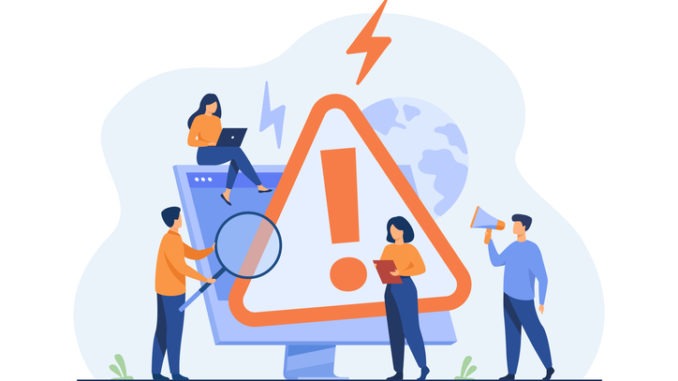
A switch to ‘phone and online offerings might not be the solution for everyone, writes Kim Thomas, but they might be part of a long-term solution to the funding chasm
CREDIT: This is an edited version of an article that originally appeared on The BMJ
Hugh Davenport was already a “keen drinker” before the pandemic, but it was having his three adult children at home during lockdown that made the university lecturer question his consumption. A bottle of wine and two bottles of strong beer every evening added up to 120 units a week. Online research led him to the charity Alcohol Change UK’s popular Try Dry app, which enables drinkers to track their intake and set goals for reduction.
The app displays units of alcohol, calories consumed, and money spent, with medals awarded for hitting reduction targets. Davenport, an occupational psychologist, recognised the appeal of targets and found himself excited at “having a medal for a day, or for three days, with no drinking.” He successfully met his initial target of 60 units a week, followed by one of 40 units a week.
People with severe dependency may need more intensive help, but Davenport says that the app can provide an opportunity to support “that huge middle belt of people who drink far too much—more than is healthy—but don’t recognise it.” His experience may point to a permanent change in how people who misuse drugs and alcohol could be supported after the pandemic.
Huge funding challenges
The harms caused by drugs and alcohol in the UK are substantial. The most recent figures show that alcohol costs the NHS £3.5bn a year, while alcohol-related crime costs the country £11.4bn annually. In 2020 7,423 deaths were directly attributable to alcohol in England and Wales. Other drug misuse costs the NHS in England about £488m a year, and there are around 3,000 deaths directly related to drugs other than alcohol per year. Almost half of homicides are drug-related. The estimated cost of harms from drug misuse (mostly relating to health and crime) total £19.3bn a year.
Alcohol use increased substantially during the pandemic, suggest surveys and an analysis by the Royal College of Psychiatrists. The expert consensus is that those who were already heavy drinkers began drinking more, while among people in recovery, says Mike Trace, chief executive of the drug and alcohol abuse charity Forward Trust, there was a “much higher reported rate of relapse.”
The UK has the second highest rate of drug deaths in Europe. Opioid use, says Emily Finch, vice chair of the Royal College of Psychiatrists, addictions executive and a consultant psychiatrist at South London and Maudsley NHS Foundation Trust, has remained relatively stable during the pandemic.
Addiction services are overstretched and underfunded. Earlier this year Carol Black’s report for the government said that it needed to spend an additional £552m a year (on top of a baseline expenditure from the public health grant of £680m year) to provide a ‘full range of high-quality drug treatment and recovery services’.
Despite the funding challenges, the UK has, says Finch, led the way in evidence-based treatments. Approaches are broadly similar across the four nations although, in England, third sector providers play a bigger role in the provision of services than elsewhere. Since 2012 drug and alcohol services in England have been provided by local authorities instead of the NHS and have seen substantial cuts to budgets.
Telephone triage
Lockdown saw a widespread move to ‘phone and online support. In Finch’s trust, a switch to telephone triage has proved popular with service users. Similarly, in some areas, clients’ regular face-to-face appointments with key workers were replaced by ‘phone calls.
Researching the experience of rural clients Jenny Scott, senior lecturer in pharmacy and pharmacology at the University of Bath, found that most ‘absolutely love it’. In rural areas, she points out, transport is expensive and services infrequent. For most people, ‘phone appointments are cheaper and easier—although a minority actively disliked them and missed face-to-face contact.
Change Grow Live, a charity that supports people with drug use disorders, began offering early assessments by ‘phone, teleconferencing and webchat. It saw an increase in people seeking support, which executive director Nic Adamson largely puts down to people feeling less intimidated. “It’s frightening walking through treatment centre doors.” Anecdotally, says Andrew Misell, Alcohol Change UK’s Wales director, online offerings attracted people “more concerned about their social status” who could access a service anonymously “without being seen by their neighbours.”
Both the fellowship group Alcoholics Anonymous and the Forward Trust began offering group programmes using Zoom that run similarly to their normal face-to-face meetings. Recognising that not everyone had online access, the Forward Trust bought several hundred cheap smartphones to give to service users. It also introduced Reach Out, an online chat service, and Kaizala, a multimedia messaging app, to enable service users to stay in touch with their key workers and each other, which have proved popular. New digital workbooks called Engage Interactive helped clients develop strategies for managing their substance use.
Trace says the impact of offering the group programme online was mixed; some people ceased to use the service, or didn’t present for help, because there was no physical presence. On the other hand, there was “much higher retention and much higher engagement” among existing service users, partly, he thinks, because it was logistically easier.

Be the first to comment